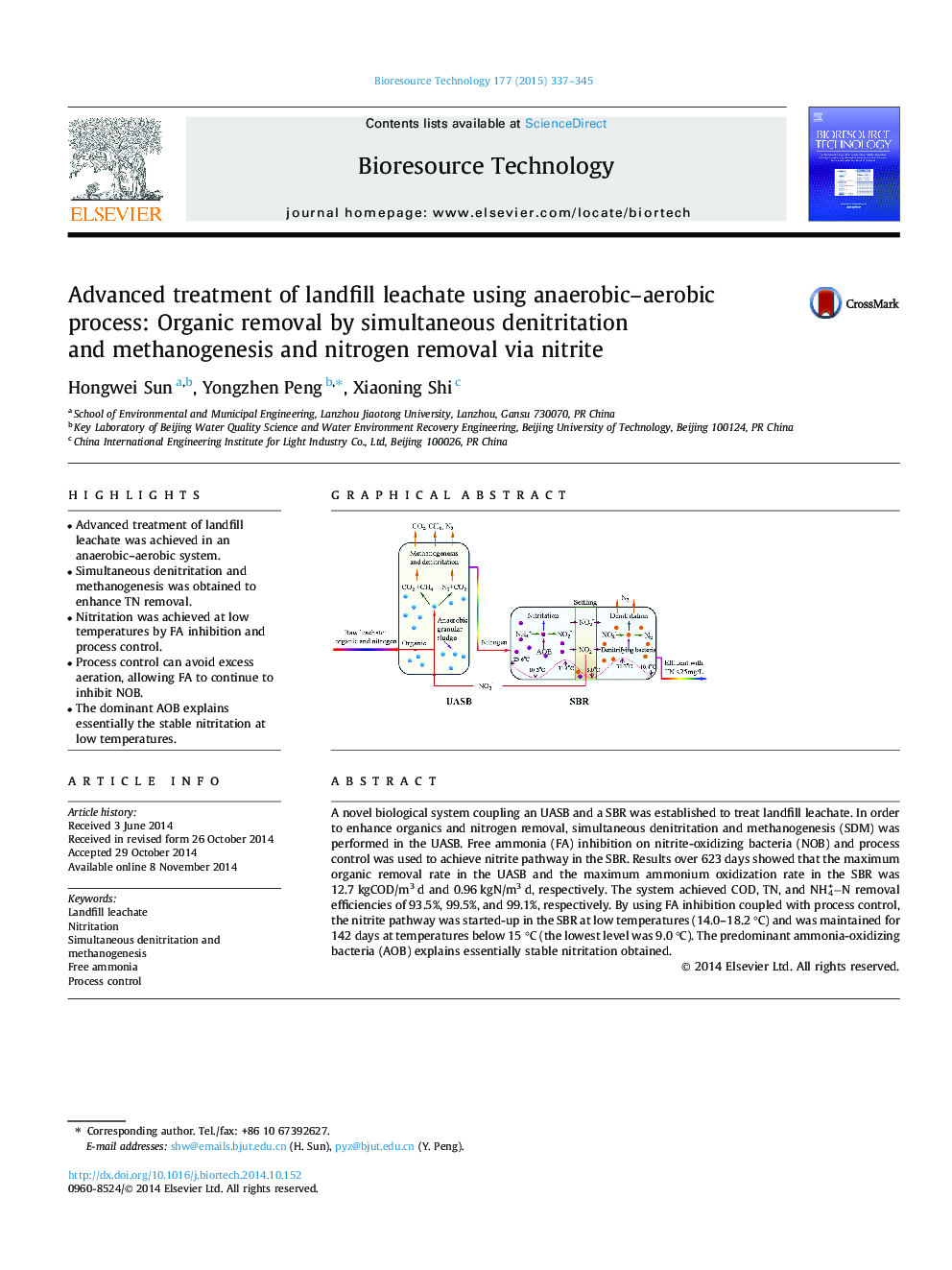| Article ID | Journal | Published Year | Pages | File Type |
|---|---|---|---|---|
| 680216 | Bioresource Technology | 2015 | 9 Pages |
•Advanced treatment of landfill leachate was achieved in an anaerobic–aerobic system.•Simultaneous denitritation and methanogenesis was obtained to enhance TN removal.•Nitritation was achieved at low temperatures by FA inhibition and process control.•Process control can avoid excess aeration, allowing FA to continue to inhibit NOB.•The dominant AOB explains essentially the stable nitritation at low temperatures.
A novel biological system coupling an UASB and a SBR was established to treat landfill leachate. In order to enhance organics and nitrogen removal, simultaneous denitritation and methanogenesis (SDM) was performed in the UASB. Free ammonia (FA) inhibition on nitrite-oxidizing bacteria (NOB) and process control was used to achieve nitrite pathway in the SBR. Results over 623 days showed that the maximum organic removal rate in the UASB and the maximum ammonium oxidization rate in the SBR was 12.7 kgCOD/m3 d and 0.96 kgN/m3 d, respectively. The system achieved COD, TN, and NH4+−N removal efficiencies of 93.5%, 99.5%, and 99.1%, respectively. By using FA inhibition coupled with process control, the nitrite pathway was started-up in the SBR at low temperatures (14.0–18.2 °C) and was maintained for 142 days at temperatures below 15 °C (the lowest level was 9.0 °C). The predominant ammonia-oxidizing bacteria (AOB) explains essentially stable nitritation obtained.
Graphical abstractFigure optionsDownload full-size imageDownload as PowerPoint slide
